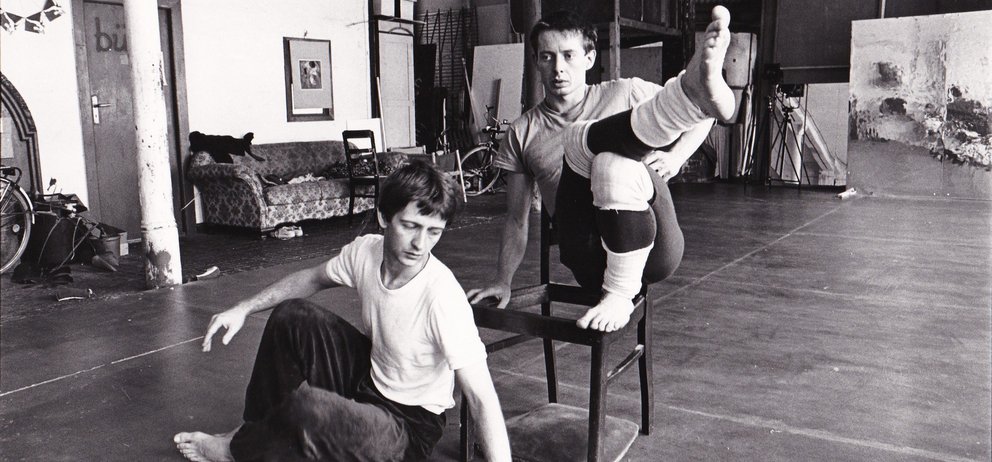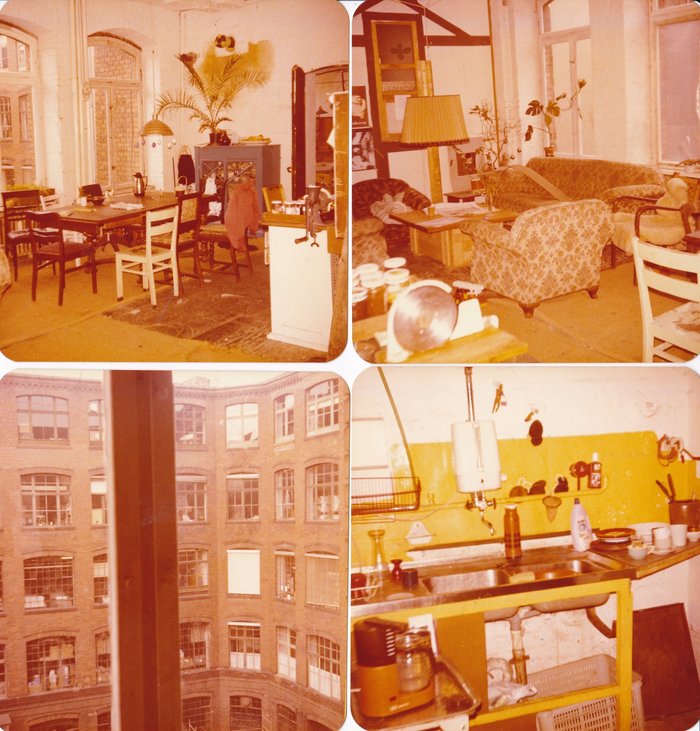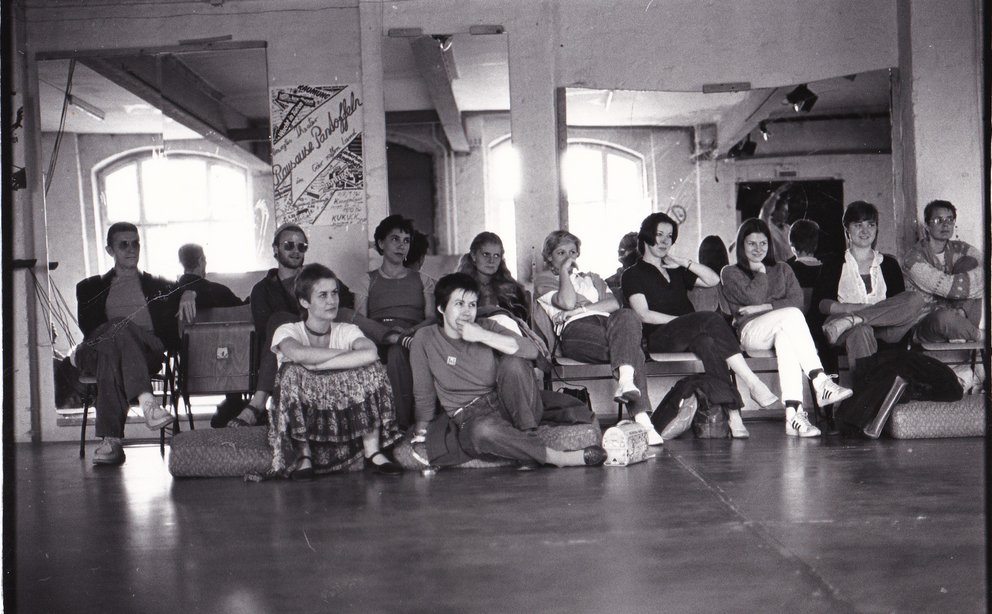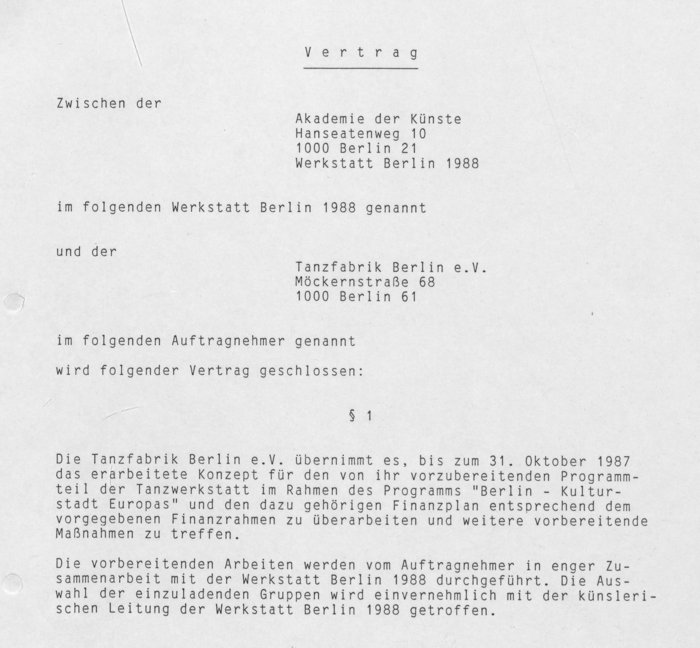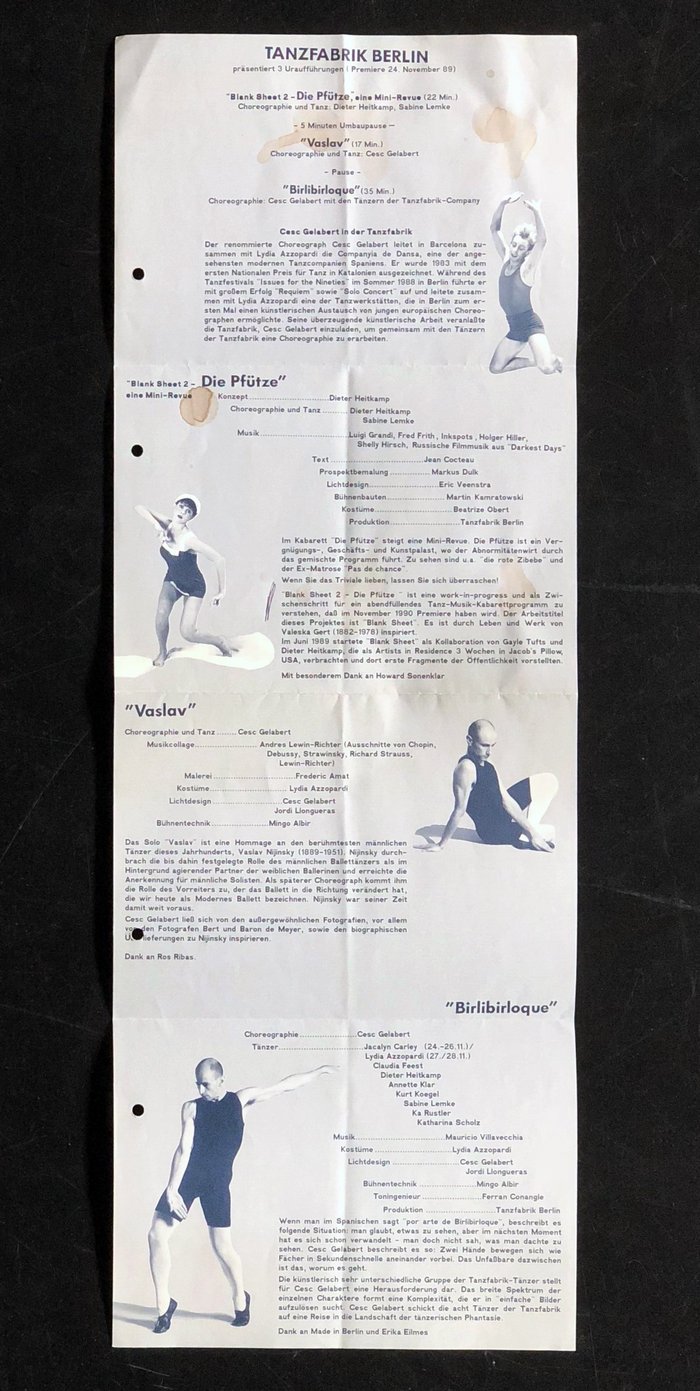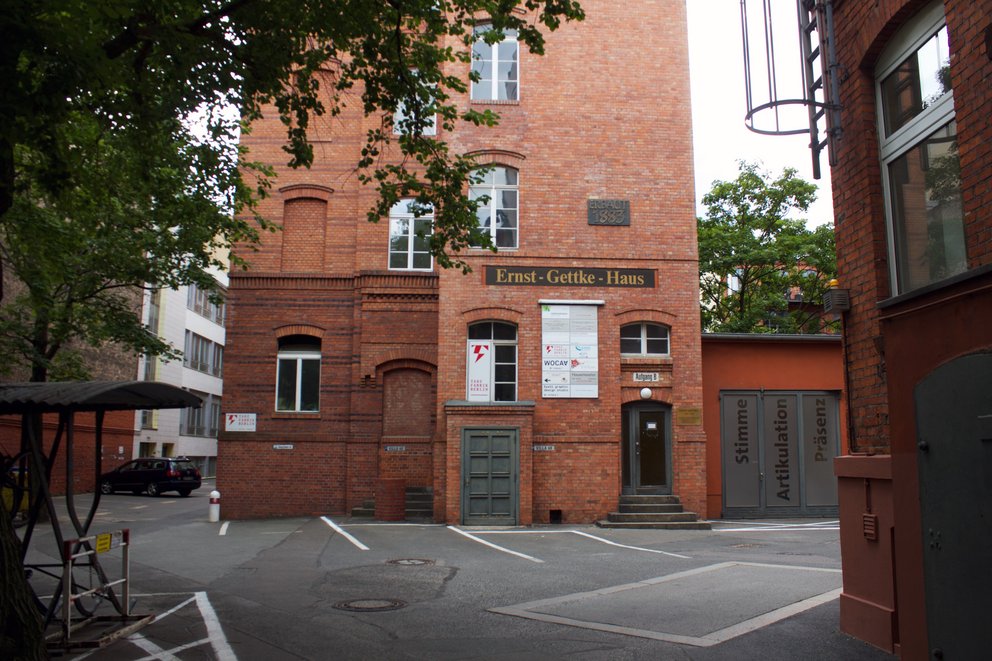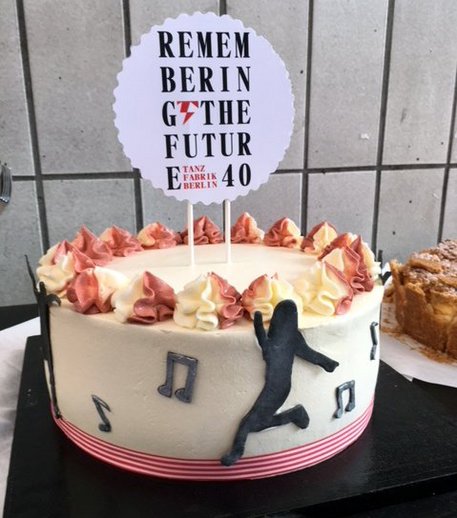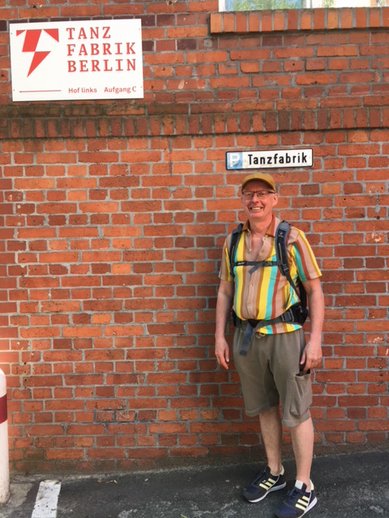This year marks 30 years of Tanz im August and 40 years of Tanzfabrik Berlin – there’s a lot to celebrate! Both institutions are as much a part of the modern history of dance in Berlin as the three ballet companies that merged – not without a lot of strife – into the Staatsballett Berlin following reunification. Worlds away from what was being celebrated in the large opera houses at the end of the 1970s, four dance enthusiasts created their own space, renting a factory floor in Kreuzberg and building a studio suitable in which they could live, work, and dance:
“The inhospitable path leads through the gloomy back courtyard of the building at Möckernstraße 68 and up three flights of stairs to a blossoming oasis in the desert of dance that is Berlin. In the 380m2 (at a dream price of 1.76 Deutschmarks per square metre) of the former Kindermann lighting factory, which later became a shoe factory, a young team of four are building a space to foster radical cultural change: the Tanzfabrik (‘the dance factory’), a centre for modern dance, improvisation, and experimental forms of dance. Much like the recent avant-gardists operating in New York lofts, a group of like-minded people are trying to combine utopia, dance, and daily life in a proletarian neighbourhood – to develop an alternative living model. Open to all, the space is suffused with the desire for physical expression, for a spontaneous and even naïve mixture of visual, acoustic, and performing arts, and, through Contact Improvisation, for physical touch.”
From ‘20 Jahre Tanzfabrik - nicht nur eine Tanzgeschichte’ – Irene Sieben, in Tanzfabrik – A Berlin Model in Contemporary Dance 1978-1998
Christina Vilardo’s Everybody Dances, the first performance at Tanzfabrik on 29 November 1978 was a programmatic statement. Berliners weren’t the only ones trying to think of dance and movement as a free site of experimentation, however. On 7 November 1978, Douglas Dunn’s performance of Gestures in Red opened the new Dance Umbrella festival in London, which was financed by the Arts Council.
